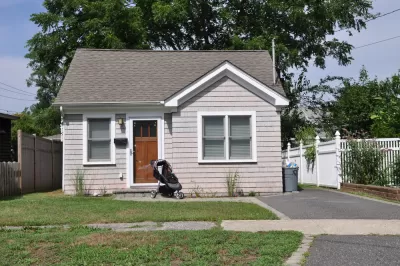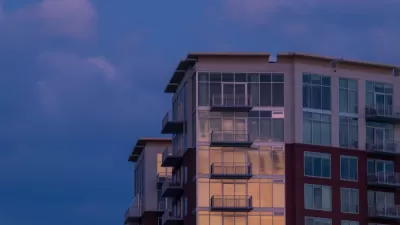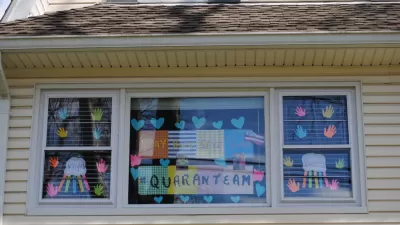The effects of the coronavirus pandemic on the U.S. real estate market are only beginning to show, but renters, homeowners, landlords, lenders, and more need to prepare for the worst.

Dwight Merriam writes to get an initial read of the effects of the coronavirus pandemic on the real estate market, summarizing the initial status of the market as a widespread crisis, with few apparent responses available and numerous effects.
Expected housing pressures for renters and owners have caused banks to decrease lending. Merriam expects home values to fall as buyers leave the market, and the entire process of buying a home becomes problematic (open houses are inadvisable, for instance).
The effect has already been felt. The National Association of Realtors surveyed its members on March 9 and its Realtors reported an 11% drop in buyer traffic and 7% lower seller traffic. The NAR predicts a 10% reduction in sales, at least in the short-term, as a consequence of the coronavirus. The NAR also issued a guide for its members about what questions they can ask of those they are dealing with as to their exposure to the virus and warning them to avoid discrimination.
The market has already reacted strongly, with REITs in mall properties and hospitality hammered. Ryman Hospitality Properties was $90.30 a share on February 18th. On Monday, March 17th, it closed at $24.09.
The remainder of the article reads like an info dump and a brainstorm, because there are many, many questions about fraud, liability, insurance, and business interruptions that simply don't have answers yet.
[The article requires an email registration, but is otherwise free to read.]
FULL STORY: The Coronavirus Pandemic and the Crisis in Real Estate

Study: Maui’s Plan to Convert Vacation Rentals to Long-Term Housing Could Cause Nearly $1 Billion Economic Loss
The plan would reduce visitor accommodation by 25,% resulting in 1,900 jobs lost.

North Texas Transit Leaders Tout Benefits of TOD for Growing Region
At a summit focused on transit-oriented development, policymakers discussed how North Texas’ expanded light rail system can serve as a tool for economic growth.

Using Old Oil and Gas Wells for Green Energy Storage
Penn State researchers have found that repurposing abandoned oil and gas wells for geothermal-assisted compressed-air energy storage can boost efficiency, reduce environmental risks, and support clean energy and job transitions.

Private Donations Propel Early Restoration of Palisades Playground
Los Angeles has secured over $1.3 million in private funding to restore the Pacific Palisades playground months ahead of schedule, creating a modern, accessible space that supports community healing after recent wildfires.

From Blight to Benefit: Early Results From California’s Equitable Cleanup Program
The Equitable Community Revitalization Grant (ECRG) program is reshaping brownfield redevelopment by prioritizing projects in low-income and environmental justice communities, emphasizing equity, transparency, and community benefits.

Planting Relief: Tackling Las Vegas Heat One Tree at a Time
Nevada Plants, a Las Vegas-based nonprofit, is combating the city’s extreme urban heat by giving away trees to residents in underserved neighborhoods, promoting shade, sustainability, and community health.
Urban Design for Planners 1: Software Tools
This six-course series explores essential urban design concepts using open source software and equips planners with the tools they need to participate fully in the urban design process.
Planning for Universal Design
Learn the tools for implementing Universal Design in planning regulations.
Ascent Environmental
Borough of Carlisle
Institute for Housing and Urban Development Studies (IHS)
City of Grandview
Harvard GSD Executive Education
Toledo-Lucas County Plan Commissions
Salt Lake City
NYU Wagner Graduate School of Public Service




























